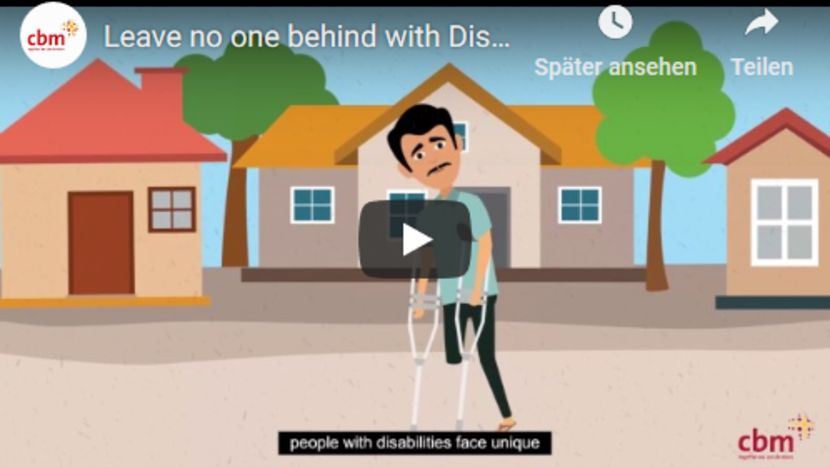Disaster Risk Reduction Day 2017
Video about inclusive Disaster Risk Reduction
What is Disaster Risk Reduction Day?
13 October is designated as International Day for Disaster Reduction to promote a global culture of disaster reduction, including disaster prevention, mitigation and preparedness. Every year the Disaster Risk Reduction (DRR) Day recognises progress and encourages further efforts to build disaster resilient communities and nations.
This Day is an opportunity to acknowledge the substantial progress being made toward reduction of disaster risk and losses in lives, livelihoods and health and in the economic, physical, social, cultural and environmental assets of persons, businesses, communities and countries.
Theme for this year
The 2017 edition continues under the "Sendai Seven" campaign, centred on the seven targets of the Sendai Framework. This year's focus is: m Reducing the number of affected people by disasters by 2030. “Home Safe Home” is the slogan for International Day for Disaster Reduction in 2017 following a year in which 24.2 million new displacements by disasters were recorded.
The Sendai Framework - a blueprint for inclusion in DRR
The Sendai Framework for Disaster Risk Reduction, adopted in Japan in March 2015, has been widely hailed as the most inclusive of its kind; not only was the process leading up to the conference and the event itself extremely participatory of persons with disabilities, but the final document, with multiple references to accessibility, inclusion and universal design, provides an outline that can lead to a safer, more resilient world for all.
Rising up from adversity
Raul Grefaldeo was 17-years-old when he experienced the event that would change his life. Read about his inspiring story coming to terms with his accident and building back better.
CBM’s work with DRR
CBM understands that responding to disasters and other humanitarian crises is more effective when there is an existing focus on reducing risks. Dealing with daily risk in urban and rural settings was highlighted at the Cancun Global Platform on climate change and DRR. CBM has been promoting the link with Community Based Inclusive Development (CBID), well known as a strategy in planning and reducing daily risk (e.g. in the prevention of impairments caused by daily risks and in improving safety on the road, in the home and in the workplace): and the natural progression that making communities safer from daily risk leads to more resilient communities, which are more prepared for larger disasters, e.g. a variety of hazard warning signals, accessible escape routes and accessible routes to services for women, men, girls and boys with diverse disabilities.
Further, CBM tries to make the transition from emergency to development easier by focusing on building resilience to adversity in development programs. By focusing on DRR, the adverse effects of the calamity are lessened and, in some instances, the likelihood of disaster is reduced. DRR is imbedded in our development work and provides an important opportunity to focus on accessibility as barriers to information, shelters and material aid disproportionately affect people with disabilities and their families when disaster strikes.
CBM is a leading organisation in disability inclusive DRR and was very active at the recent Global Platform on Climate Change and DRR (Cancun, May 2017). We were key in pushing messages such as:
- Ensure people centered approach - Presence of environmental, communication and institutional barriers, as a direct impact of which persons with disabilities are two to four times more likely to get injured or die in case of a disaster
- Participation, from the very beginning, of people with diverse disabilities and other marginalised groups, as planning requires information, and people with disabilities have essential information needed. Any community can only call itself an inclusive, resilient community when everyone, including women and men and girls and boys with diverse disabilities, older people, have representation in national and local DRR Committees, forums, platforms and strategies. Empowerment, meaningful participation and partnerships are key.
- Dis-aggregated and accessible data is essential to ensure no-one is left behind and the Washington Group questions can be utilised in consensuses; build up and coordinated over time to ensure uniformity and facilitate global aggregation.
- There is also the need for indicators that reflect reduction in environmental, educational, institutional barriers, etc.
DPO participation and community action
Participation of DPOs for meaningful actions in disability-inclusive DRR include capacity building for key actors, emphasising on inclusion on all stages of DRR plans and strategies for resilient plans, safety information in accessible formats. By working with DPOs, communities and local governments, CBM has been conducting trainings and making available resources and stories on best practices from several countries on the meaningful participation of persons with disabilities.
At the Cancun Global Platform, the call was putting words into action through community action. CBID is a key community inclusive development strategy to ensure everyone contributes and benefits from DRR plans and actions. CBM works to ensure inclusive multi-stakeholder ownership at community level, the reduction of barriers and prejudices, and improvement of inclusive and diverse warning systems, evacuation routes, inclusive hazard mapping, search and rescue, WASH and in building back better, accessible and universally designed reconstruction.
